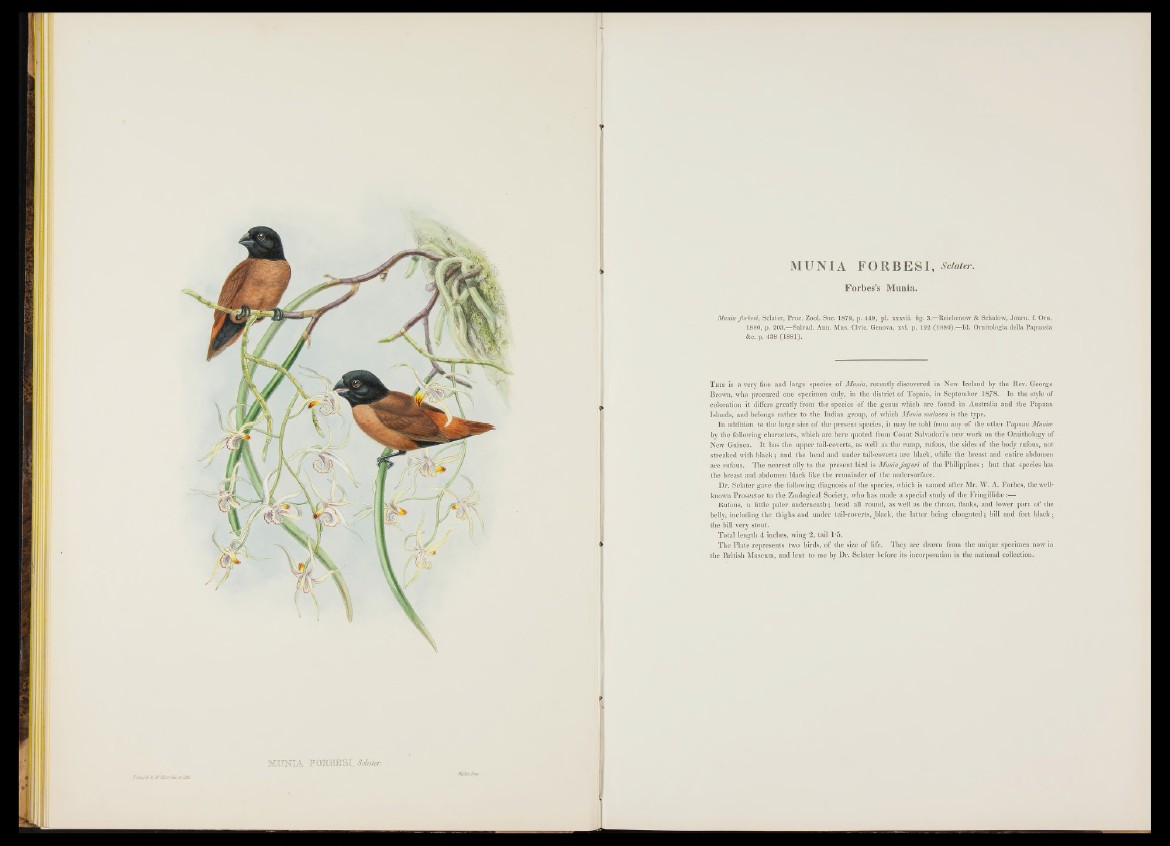
MUNIA. FOBHESI, Sclater.
J&avdA kV ^ffa rt/,iel'ii'2 ìà tf.
MUNIA FORBESI, Sclater.
Forbes’s Munia.
Munta forbesi, Sclater, Proc. Zool. Soc. 1879, p. 449, pi. xxxvii. fig. 3.—Reichenow & Schalow, Journ. f. Orn.
1880, p. 203.—Salvad. Ann. Mus. Civic. Genova, xvi. p. 192 (1880).—Id. Ornitologia della Papuasia
&c. p. 438 (1881).
T his is a very fine and large species o f Munia, recently discovered in New Ireland by the Rev. George
Brown, who procured one specimen only, in the district o f Topaio, in September 1878. In the style of
coloration it differs greatly from the species of the genus which are found in Australia and the Papuan
Islands, and belongs rather to the Indian group, o f which Munia malacca is the type.
In addition to the large size of the present species, it may be told from any o f the other Papuan Munia
by the following characters, which are here quoted from Count Salvadori’s new work on the Ornithology of
New Guinea. I t has the upper tail-coverts, as well as the rump, rufous, the sides o f the body rufous, not
streaked with b lack ; and the bead and under tail-coverts are black, while the breast and entire abdomen
are rufous. The nearest ally to the present bird is Munia jagori o f the Philippines ; but th at species has
the breast and abdomen black like the remainder o f the undersurface.
Dr. Sclater gave the following diagnosis of the species, which is named after Mr. W. A. Forbes, the well-
known Prosector to the Zoological Society, who has made a special study o f the Fringillidae:—
Rufous, a little paler underneath; head all round, as well as the throat, flanks, and lower part o f the
belly, including the thighs and under tail-coverts, black, the latter being elongated; bill and feet black;
the bill very stout.
Total length 4 inches, wing 2, tail 1*5.
The Plate represents two birds, o f the size o f life. They are drawn from the unique specimen now in
the British Museum, and lent to me by Dr. Sclater before its incorporation in the national collection.